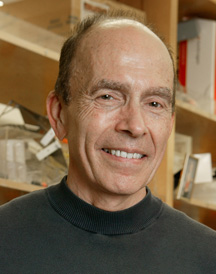

Team Observes Human Neurodegenerative Disorder in Fruit Flies
By Jason Socrates Bardi
A team of scientists from The Scripps Research Institute, Katholeike Universiteit Leuven, and the University of Antwerp, Belgium, among other institutions, has created a genetically modified fruit fly that mimics key features of Charcot-Marie-Tooth disease, a common neurodegenerative disorder that strikes about one out of every 2,500 people in the United States.
As described in an article published in an Early Edition of the journal Proceedings of the National Academy of Sciences on June 26, 2009, the work will enable scientists to study the development of the disease in powerful new ways. This work may reveal new information on how the disease develops in humans, and it will provide researchers with a tool for discovering potential new drugs to treat the disease.
Named for the three physicians who first identified the disease in 1886, Charcot-Marie-Tooth is one of the most common inherited neurological disorders in the United States today. When people have this disease, some lose the protective covering on their nerves called myelin. This causes a host of problems that usually emerge in early adulthood, including loss of muscle mass, pain and sensitivity, foot deformations, and walking difficulties.
After the human genome was solved a few years ago, studies revealed that some people with Charcot-Marie-Tooth have mutations in their genes that make a critical human protein called tyrosyl-tRNA synthetase.
This came as a surprise to many scientists, says Paul Schimmel, who is the Ernest and Jean Hahn Professor and Chair of Molecular Biology and Chemistry and is a member of The Skaggs Institute for Chemical Biology at Scripps Research. This protein belongs to a class of molecules involved in one of the most fundamental processes in life—the culminating steps in gene expression.
Basically, when a gene is expressed, its double-stranded DNA is first transcribed into a corresponding single-stranded piece of messenger RNA. Then an enzyme called the ribosome uses the mRNA as a template to make a protein by reading out its genetic sequence and then translating it into a string of amino acids. That's where the tRNA synthetases are needed.
When building new proteins, ribosomes rely on a set of molecules called transfer RNAs (tRNAs) to supply them with the amino acids they need to construct the proteins. The tRNA synthetases are needed to attach amino acids to the tRNAs.
Sound complicated? It is. But the action of tRNA synthetases is also so essential that every creature on the planet has these molecules, which probably evolved very early on as life first emerged on Earth.
"These proteins are among the first to appear in the planet," says Schimmel, who led the current research effort. "All cells need them to grow, divide, and survive."
When mutations in tyrosyl-tRNA synthetase were linked to Charcot-Marie-Tooth disease a few years ago, scientists debated whether problems arose because the mutations interfered with tRNA synthetase’s normal function, helping to express genes into proteins, or whether they arose because the mutations interfered with some other unknown function.
Schimmel had been studying this type of molecule for many years and had already discovered novel functions that had evolved over time in some tRNA synthetases, including this one. He reckoned that, if one could first show that a CMT-causing mutant synthetase was active for protein synthesis, then recreating the same disease in another organism (by putting the same mutations in the other organism's analogous gene) would demonstrate that a novel function was at play.
This is exactly what he and his scientific collaborators did. After showing that the disease was not caused by a defect in the synthetase’s activity for protein synthesis, the researchers created the same mutations to the equivalent protein in the fruit fly Drosophila melanogaster, which caused the insect to develop a condition with several of the hallmarks of the human disease. This suggests that Charcot-Marie-Tooth disease is related to some fundamental and unknown function the protein plays in the development and homeostasis of the nervous system. Because the unknown function is common to both humans and flies, it probably evolved hundreds of millions of years ago before the ancient ancestors of humans and flies diverged.
What exactly this function is for is still unknown. "That is a great mystery," says Schimmel. He adds that the genetically altered fruit flies are a convenient and powerful model system that may be able to help answer this question.
In addition to Schimmel, the article, "Dominant mutations in the tyrosyl-tRNA synthetase gene recapitulate in Drosophila features of human Charcot–Marie–Tooth neuropathy," was authored by Erik Storkebaum, Ricardo Leitão-Gonçalves, Inge Bosmans, Patrick Van Dijck, Koen Norga, and Patrick Callaertsa of Katholeike Universiteit Leuven, Tinne Ooms, An Jacobs, Vincent Timmerman, and Albena Jordanova of the University of Antwerp, Tanja Godenschwege and Monica Mejia of Florida Atlantic University, Leslie Nangle of Scripps Research and Tyr Pharma, and Xiang-Lei Yang of Scripps Research. For more information, see http://www.pnas.org/content/early/2009/06/25/0905339106.abstract.
This work was supported by the University of Antwerp, Katholieke Universiteit Leuven, Research Foundation Flanders, the Belgian Federal Science Policy Office, Medical Foundation Queen Elisabeth, the Association Belge contre les Maladies Neuromusculaires, the National Institute of Child Health and Human Development, the National Institutes of Health, the National Foundation for Cancer Research, and the Fund for Scientific Research.
Send comments to: mikaono[at]scripps.edu

Professor Paul Schimmel was a leader of the new research, which developed the genetically altered fruit flies that offer a convenient and powerful model system to better understand Charcot-Marie-Tooth disease.
